
Now available
Gagosian Quarterly Spring 2025
The Spring 2025 issue of Gagosian Quarterly is now available, featuring Cy Twombly’s Paesaggio (1986) on the cover.
To my mind, one does not put oneself in place of the past; one only adds a new link.
—Cy Twombly
Cy Twombly (1928–2011) developed a gestural vocabulary in which each line and color is infused with energy, spirituality, and meaning. Emerging as a prominent figure in the mid-1950s following extensive travels throughout Europe and North Africa, he produced works that are simultaneously personal and mythological, allowing narrative, language, and inner visions to erupt from his intimate, abstract notations.
Twombly was born in 1928 in Lexington, Virginia, and studied art in Boston and New York, then at Black Mountain College in North Carolina in the early 1950s. Although he was a contemporary of Robert Rauschenberg and Jasper Johns, his work soon digressed from the aims of American postwar abstraction. While prevailing tendencies of the period, such as Pop art, sought to abandon historical narratives altogether, Twombly directed his focus toward ancient, classical, and modern poetic traditions. In the late 1950s he moved to Italy, where he produced colorful, diagrammatic works, such as Ode to Psyche (1960), that feature erotic allusions and sly jokes while maintaining an abstract charge. Shortly thereafter the sebaceous, bright colors of these works gave way to the more austere grays and blues of the “blackboard” paintings, in which terse, white scrawls and loops recall the powdery effects of chalk on a blackboard. As Twombly continued to work in various locations over the following decades—including Rome, Lexington, and his final residence, in Gaeta, Italy—places, landscapes, and natural forms came to figure prominently in his drawings, collages, photographs, and watercolors.
For Twombly, the poetic and the rational were not mutually exclusive. Collage, which engaged him briefly in 1959, then began to appear more regularly in 1971, allies Twombly to the Dadaists and their descendants, such as Rauschenberg and Johns. Visual information from everyday life—travel postcards, reproductions of paintings, scientific illustrations, personal drawings, and more—entered his work as a way to explore the potential of both structure and meaning.
From his student days on, Twombly also captured his daily life in photographs. He recorded the verdant landscapes of Virginia and the coasts of Italy; close-up details of ancient buildings and sculptures; studio interiors; and still lifes of objects and flowers. Beginning in the early 1990s, he used specialized copiers to enlarge his Polaroid images on matte paper, resulting in subtle distortions that approximate the timeless qualities of his paintings and sculptures.
In 1995 the Cy Twombly Gallery opened across the street from the Menil Collection in Houston. A collaboration between the Menil, Dia Foundation, and Twombly himself, the gallery serves as a permanent home for a number of important works made between 1953 and 2004. Included is the series of paintings Analysis of the Rose as Sentimental Despair (1985), which features floral forms in deep reds, pinks, and purples, with quotations from Rainer Maria Rilke, Rumi, and Giacomo Leopardi. In 2010 Twombly was selected to install a permanent work at the Louvre: a painted ceiling for the Salle des Bronzes. The Ceiling spans 3,750 square feet and pays homage to the greatest Hellenic sculptors, from Phidias to Praxiteles, each of their names inscribed over an immense blue sky populated by floating, cosmic orbs.
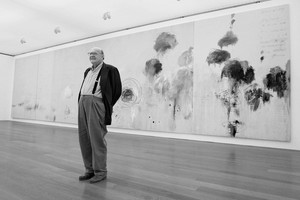

The Spring 2025 issue of Gagosian Quarterly is now available, featuring Cy Twombly’s Paesaggio (1986) on the cover.

Jenny Saville reflects on Cy Twombly’s poetic engagement with the world, with time and tension, and with growth in this excerpt from her Marion Barthelme Lecture, presented at the Menil Collection, Houston, in 2024.

Eleonora Di Erasmo, cocurator of Un/veiled: Cy Twombly, Music, Inspirations, a program of concerts, video screenings, and works by Cy Twombly at the Fondazione Nicola Del Roscio, Rome, reflects on the resonances and networks of inspiration between the artist and music. The program was the result of an extensive three-year study, done at the behest of Nicola Del Roscio in the Rome and Gaeta offices of the Cy Twombly Foundation, intended to collect, document, and preserve compositions by musicians around the world who have been inspired by Twombly’s work, or to establish an artistic dialogue with them.

In 2020, the Museum of Fine Arts, Boston, announced their plan for a survey of Cy Twombly’s artwork alongside selections from their permanent ancient Greek and Roman collection. The survey was postponed due to the lockdowns necessitated by the coronavirus pandemic, but was revived in 2022 with a presentation at the J. Paul Getty Museum in Los Angeles from August 2 through October 30. In 2023, the exhibition will arrive at the Museum of Fine Arts, Boston. The curator for the exhibition, Christine Kondoleon, and Kate Nesin, author of Cy Twombly’s Things (2014) and advisor for the show, speak with Gagosian director Mark Francis about the origin of the exhibition and the aesthetic and poetic resonances that give the show its title: Making Past Present.
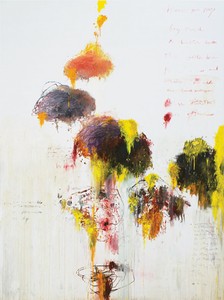
Thierry Greub tracks the literary references in Cy Twombly’s epic painting of 1994.
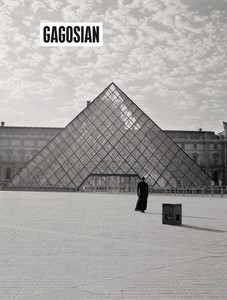
The Summer 2021 issue of Gagosian Quarterly is now available, featuring Carrie Mae Weems’s The Louvre (2006) on its cover.
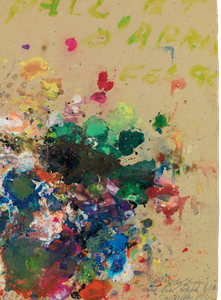
Anne Boyer, the inaugural winner of the Cy Twombly Award in Poetry, composes a poem in response to Twombly’s Aristaeus Mourning the Loss of His Bees (1973) and introduces a portfolio of the painter’s works accompanied by the poems that inspired them.

The Spring 2021 issue of Gagosian Quarterly is now available, featuring Gerhard Richter’s Helen (1963) on its cover.

Bobbie Sheng explores the symbiotic relationship between the poet and visual artists of his time and tracks the enduring influence of his poetry on artists working today.
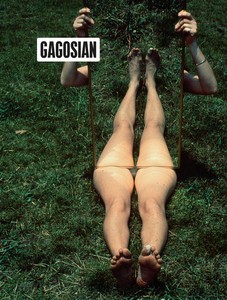
The Summer 2020 issue of Gagosian Quarterly is now available, featuring Joan Jonas’s Mirror Piece 1 (1969) on its cover.

London’s River Café, a culinary mecca perched on a bend in the River Thames, celebrated its thirtieth anniversary in 2018. To celebrate this milestone and the publication of her cookbook River Café London, cofounder Ruth Rogers sat down with Derek Blasberg to discuss the famed restaurant’s allure.
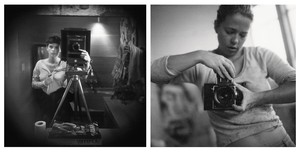
The two artists discuss being drawn to difficult subjects, the effects of motherhood on their practice, embracing chance, and their shared adoration of Cy Twombly.
Request more information about
Cy Twombly